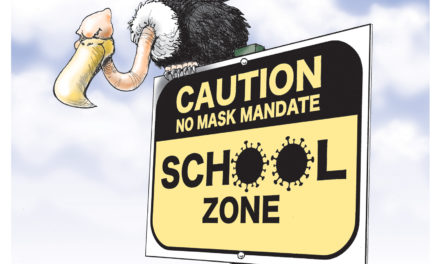In a blog from three years ago, we wrote: “Although the city mayor has now taken himself out of the picture, the committee he convened has turned its attention to school funding. If it really wants to accomplish something, it shouldn’t look at school funding in isolation. It should start…with the emphasis on equalizing the unfair tax burden that Memphians pay for public services.”
This is especially graphic when it comes to joint city-county agencies and construction projects. On the many projects in which Memphis and Shelby County split the costs, Memphians do much more than pay its half. After all, Memphis taxpayers pay all of the city government’s portion, and then turn around and pay about 65 percent of the county’s portion. This means that overall, on these joint projects, Memphians pay 83 percent of the total.
Put another way, older sections of Memphis are now being asked to subsidize their own decline.
Lately, in light of Memphis City Council’s “better late than never” cut in funding to Memphis City Schools as the first step in equalizing the tax burden of Memphians and justifying the responsibilities of each local government, we were asked what should be done if Council members want to address this tax issue in the most logical way possible.
Wanted: Answers
Our answer is that we would conduct a study on the cost of sprawl that includes the following:
— the proportion of the county tax base, for the past 20 years, that is within Memphis city limits and within the city’s annexation reserve area.
— the proportion of the county tax base that is paid by Memphis taxpayers from all residential, commercial and industrial sources.
— the amount of county tax dollars that was spent over the past 20 years on capital projects supporting suburban development in the area outside of Memphis, including money spent on roads, schools, drainage, paving, traffic signals, parks, landfills, etc.
— the proportion of the operating budget and capital budget of Shelby County spent in the past 20 years on the expansion of the sheriff’s department to serve the suburbs, ambulance service to some towns and unincorporated Shelby County, fire services, etc.
— the proportion of the operating budget and special services such as elections, Agricultural Extension, Soil Conservation Service, Shelby County police, office buildings, information technology, etc., that is paid by Memphis taxpayers.
— the total of 50-50 city-county funded projects for the past 20 years, such as The Pyramid, AutoZone Park, FedEx Forum, Memphis Cook Convention Center, Memphis/Shelby County Health Department, etc., and determine the actual overall percentage paid by Memphis taxpayers.
— examine revenues and expenditures of joint city-county agencies administered by Shelby County, such as Construction Codes Enforcement, to determine how much of the revenues are generated within Memphis and how much of the revenue is actually spent on city needs, how much was spent on general government expenses of Shelby County, and how much was spent on inspection/enforcement outside the city limits.
Paying For Your Own Decline
In setting this broader context, we should come face-to-face with the disparity of Memphians’ tax burden and why smart growth will never succeed as long as city taxpayers are expected to subsidize their own neighborhoods’ abandonment.
That’s why the overriding fiscal policy problem in our community is not school funding, but equalizing the tax burden between Memphians and non-Memphians. Achieving that goal not only produces fair funding for schools, but true tax equity in Memphis and Shelby County for the first time.
Memphis is unique in its place as one of only a few metropolitan areas – underline metropolitan – that has such a complex web of economic, social, and physical conditions associated with concentrations of poverty and its attendant problems. Addressing these and other issues is complicated by the lack of a coherent philosophy of public funding.
Determining Equity
What is needed is a fiscal equity study that becomes the blueprint for a taxing philosophy that is sound, equitable, and logical. In Shelby County, population movement has resulted in shifting revenue and expenditure patterns, and because of this, the questions that need definitive answers are:
1) Who pays?
2) Who benefits?
3) What is the most equitable philosophy of funding public services?
The overwhelming majority of citizens in Shelby County pays taxes to a municipality, and every one pays taxes to county government. It is the disparity between county services paid for and county services received that create inequities for Memphis taxpayers.
At the heart of the problem is the lack of coherency in county tax policies. Shelby County’s rationale for service delivery is – and has been for 30 years since its restructure – schizophrenic and confusing to the people who pay its bills. For example, county government delivers some services countywide, such as public health and criminal justice. For some cities, it provides fire protection and law enforcement. In others, it provides ambulance service. Outside of Memphis, Shelby County Government pays the total cost of education, and the towns pay nothing. Outside of Memphis, it has entered into partnerships with cities to help fund major road projects.
Answering The Right Questions
In other words, the current system lacks consistency and rationality. As a result, what is at issue is the fiscal equity achieved by the type, the quantity, and the location of county services. To determine what is fiscally equitable, an analysis is needed to answer two questions:
1) Are municipal and non-municipal taxpayers receiving their fair shares of existing county and municipal services?
2) What levels of service delivery to incorporated and unincorporated areas should Shelby County assume in order to best serve its citizens?
To get at these answers, a fiscal equity study should determine the fiscal power of the county and its cities, determine the fiscal capacity of the county and its cities, determine the fiscal demands of the county and its cities, determine the relationship between capacity and demands, determine the precise source of revenues and expenditures, determine the organization and content of ongoing policy analyses which find the most equitable and cost effective way to control funding of public projects and services, prepare case studies of comparable urban/suburban areas, and examine the relationships between county and municipal governments.
History-making
At the end of this process, for the first time in history, there could be a rational framework for what is municipal and what is regional (county). In turn, what is considered regional should be moved to the county tax base. Everything else should be left for individual cities to fund.
A fiscal equity program would likely shift many services that are now considered Memphis services to the regional tax base (Shelby County’s), and in this way, a major goal for this community would be accomplished — to lower the city’s tax rate to be comparable to the other municipalities of Shelby County. That is only fair, because at this time, Memphians pay a premium – if not a disincentive – to live in their city.
Leveling The Playing Field
The quality of the public infrastructure influences personal decisions on where to live, how far to commute and where to shop. Residents are now tempted by their own government to abandon older neighborhoods in favor of new ones, producing a decline in the quality of the infrastructure for older areas and incalculable social costs — the decline in a sense of community, the inequality caused by the flight of wealth, the inefficient use of land, and the redundancy in public investments.
In 2001, the so-called “tiny town” controversy gave our community its best chance to address the tax inequities implicit in the current tax system. Being negotiated at that time was a proposal to move libraries, museums, economic development agencies, most joint agencies and more to the county’s tax base. Regrettably, the political pressure eased up, and the agreement was never consummated.
Conceptually, it was designed to lower the tax rate of Memphis to a level in the same ballpark as Germantown and Collierville. But it was not to be, and the unfair tax burden for Memphians remains.
That’s why, in the end, ideas from consolidation to single source funding for schools may or may not be a good choices for Memphis’ future, but the real priority is to inject some common sense into a tax structure that is, in a word, nonsensical.




